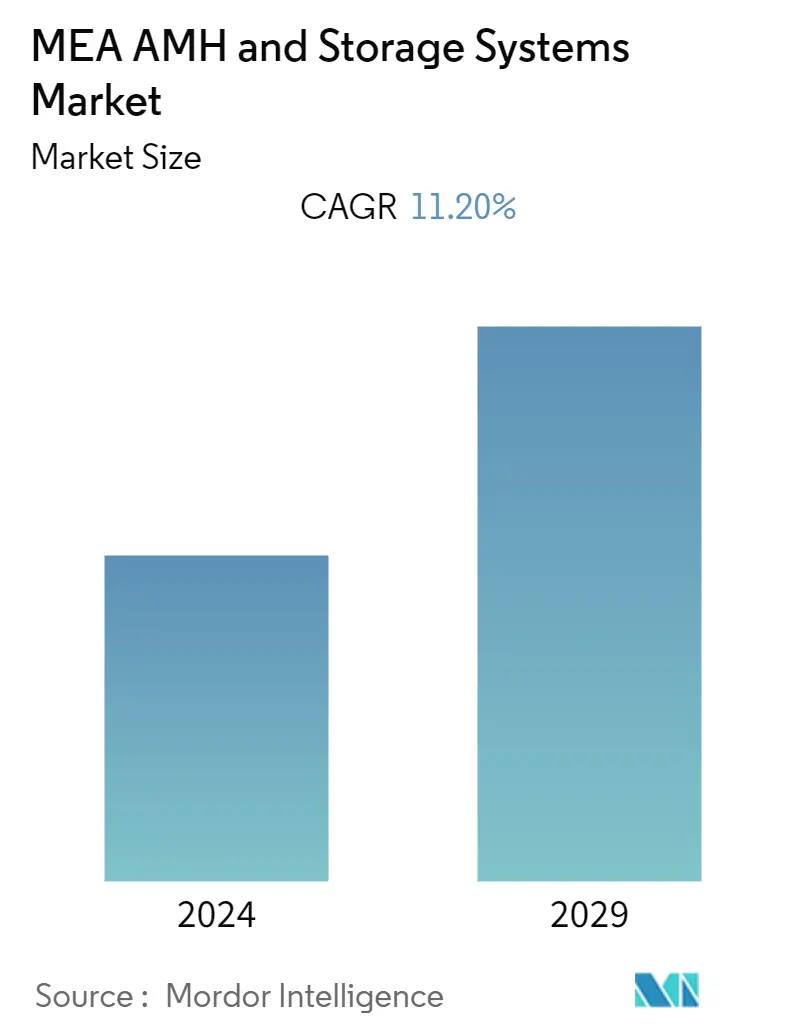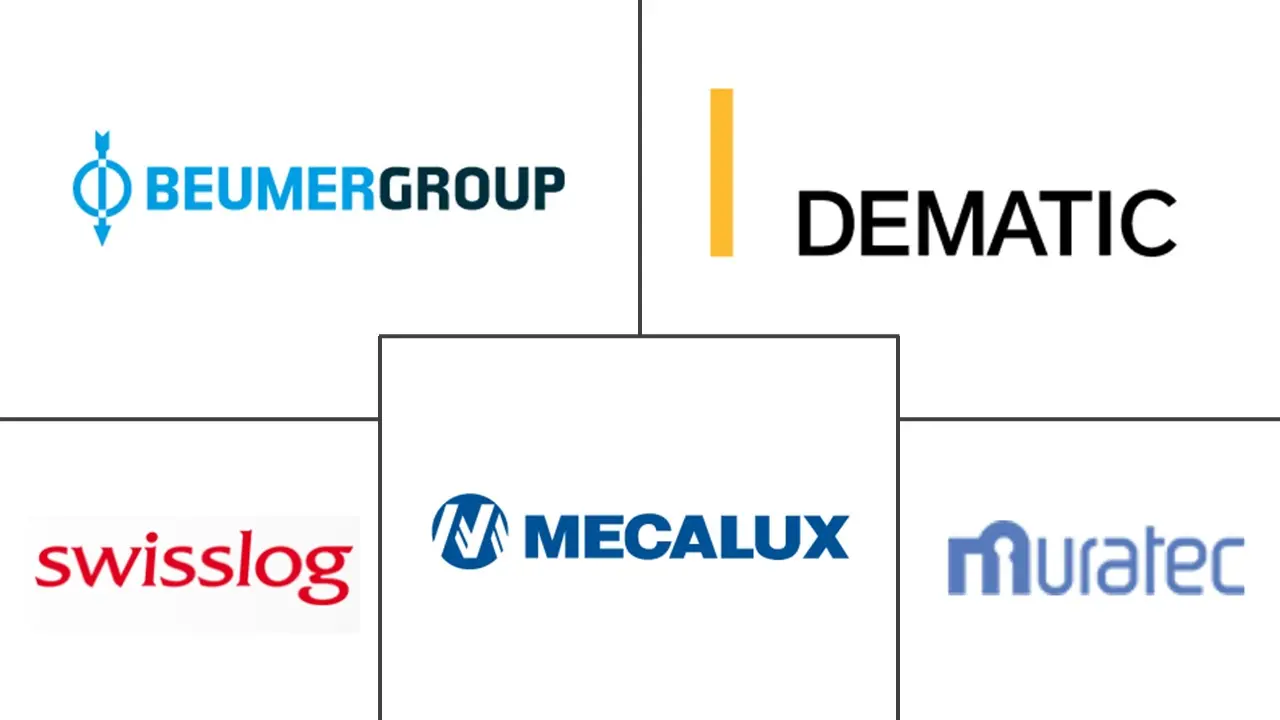Market Size of MEA AMH and Storage Systems Industry

| Study Period | 2019 - 2029 |
| Base Year For Estimation | 2023 |
| Forecast Data Period | 2024 - 2029 |
| Historical Data Period | 2019 - 2022 |
| CAGR | 11.20 % |
| Market Concentration | Low |
Major Players
*Disclaimer: Major Players sorted in no particular order |
Need a report that reflects how COVID-19 has impacted this market and its growth?
MEA Automated Material Handling and Storage Systems Market Analysis
The Middle East and Africa Automated Material Handling and Storage Systems Market is expected to register a CAGR of 11.2% during the forecast period. Rising technological advancements, labor costs and safety concerns, increasing efficiency and productivity of manufacturing and warehouse operating companies, a significant recovery in the Middle East and Africa manufacturing, growing demand for automation in industries, robots in manufacturing units and warehousing facilities, and rising emerging markets are key factors driving the growth of the automated material handling and storage systems market. Additionally, throughout the projection period, the market will likely benefit from the expanding digitization of supply chain operations. The increasing level of order customization and personalization will complement this expansion.
- The market is driven by trends caused by countries adopting technology 4.0 and IoT. Using robotics, industry 4.0 is revolutionizing material handling. In warehouses and distribution facilities, robotics has become more prevalent. In addition to picking and packaging orders, robots can be employed for loading and unloading trucks, and even cleaning the warehouse floor. Workplace accuracy and productivity can both be enhanced by robotics. Robots can also help companies save money by reducing the amount of manual work necessary. Industry 4.0 also has an impact on material handling using artificial intelligence. AI-powered robots are faster and more precise at picking orders than people. Additionally, they can use machine learning to route orders efficiently through the warehouse.
- IoT significantly reduces the cost and time needed for AGV/AMR maintenance. AGVs can be remotely monitored by maintenance personnel, who are only called in when problems emerge, eliminating the need for routine maintenance visits. Additionally, because the devices are operated by sophisticated software, cloud-based apps can control them wirelessly. Instructions can be transmitted remotely, and technical problems are easily fixed. As a result, maintenance is simple and affordable.
- E-commerce has been growing rapidly over the last few years. Many companies have moved from physical retail to online to better cater to consumer requirements. Major companies in the region have invested in technology to provide reliable consumer service.
- The COVID-19 pandemic complicated the situation of automation adoption in various sectors. It changed the standard operating procedure by bringing in unique challenges of social distancing and contactless operation. Organizations were forced to limit their workforce and deal with the increasing demand. In the post-pandemic era, cleaning public spaces is a difficult problem. The usage of UV-C light has proven to be a non-intrusive solution to this problem. However, UV light can harm a person's skin. AMRs with UV-C lamps installed can move independently through a defined region. Robots can navigate maps made by mobile apps using waypoints. The robots then proceed to clean the area while following the waypoints. When the battery is low, the robots also find the charging station without human assistance. Such use cases are anticipated to offer lucrative opportunities for the growth of the studied market.
- The equipment used for material handling (such as robotic arms) and storage systems has been highly cost-intensive. Automated storage and retrieval systems (ASRS) have been found to cost higher than the typical material-handling equipment in the market studied. Automated cranes also need a high amount of infrastructure to sustain the product.

